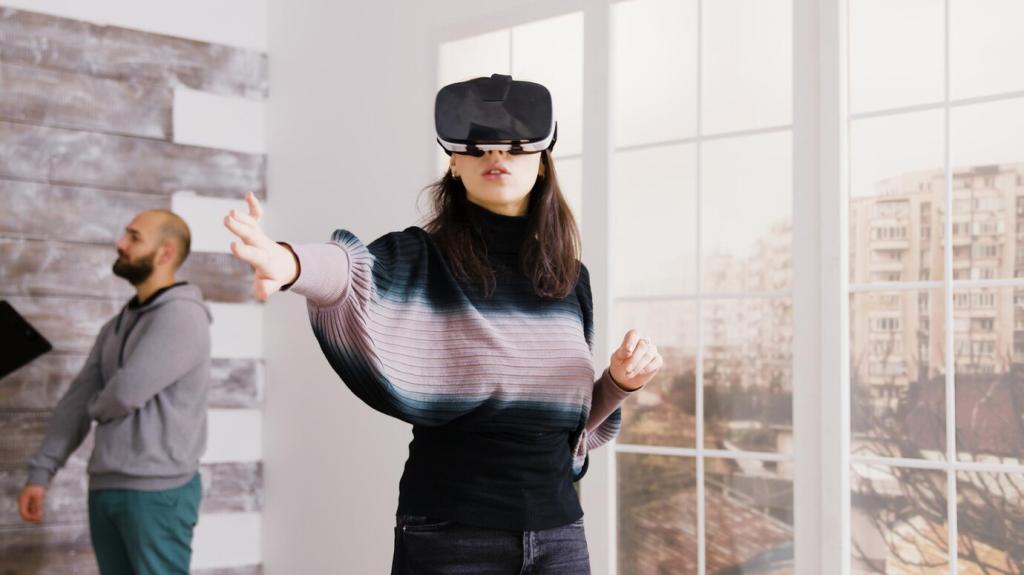Creating Immersive Experiences with VR Design
Selected theme: Creating Immersive Experiences with VR Design. Step into presence-first worlds where design dissolves the screen. We’ll blend practical methods, honest stories, and human-centered principles that turn prototypes into places. Subscribe for fresh experiments, and tell us which moments make you forget the headset.
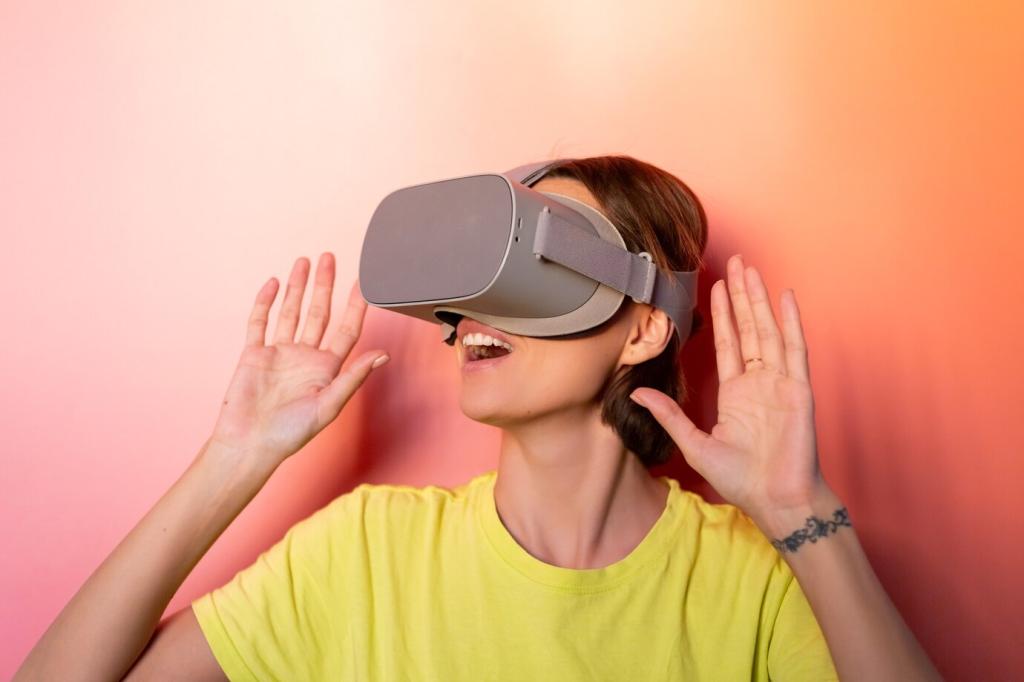
True immersion arrives when users feel their choices echo through the environment. Tune interactions so agency is immediate, reliable, and meaningful, and reduce friction that disrupts flow. Share your favorite presence-building trick with us, and invite others to test it in diverse, unpredictable scenarios.
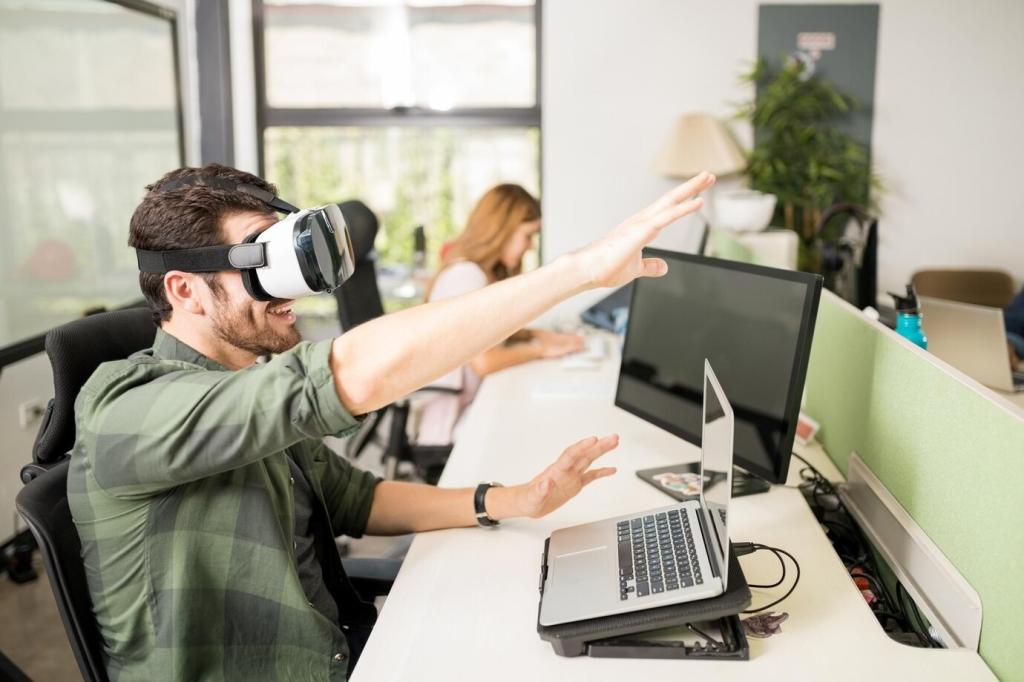
Worldbuilding that Feels Lived-In
Scale, Proportion, and the Body’s Truth
VR scale is merciless; a doorframe two inches short feels uncanny. Align measurements to ergonomic ranges, but allow occasional exaggeration for emotion. We once enlarged a library’s ceiling by fifteen percent; suddenly, whispers felt sacred. Tell us where you bend realism to intensify awe without breaking comfort.
Lighting, Atmosphere, and Guiding the Gaze
Light composes attention faster than signage. Use volumetrics, god rays, and shadow rhythm to suggest paths. In a harbor scene, a sweeping lighthouse beam paced exploration while hiding loading swaps. Post your favorite trick for guiding gaze without arrows, and we’ll test it in next week’s build.
Diegetic Interfaces and Story Objects
UI should live in the world—maps as foldable scrolls, health as pulse in the wrist controller, progress etched into tools. Our switch from floating markers to glowing trail dust felt instantly more believable. Share a screenshot-worthy diegetic UI idea, and we might prototype it on stream.
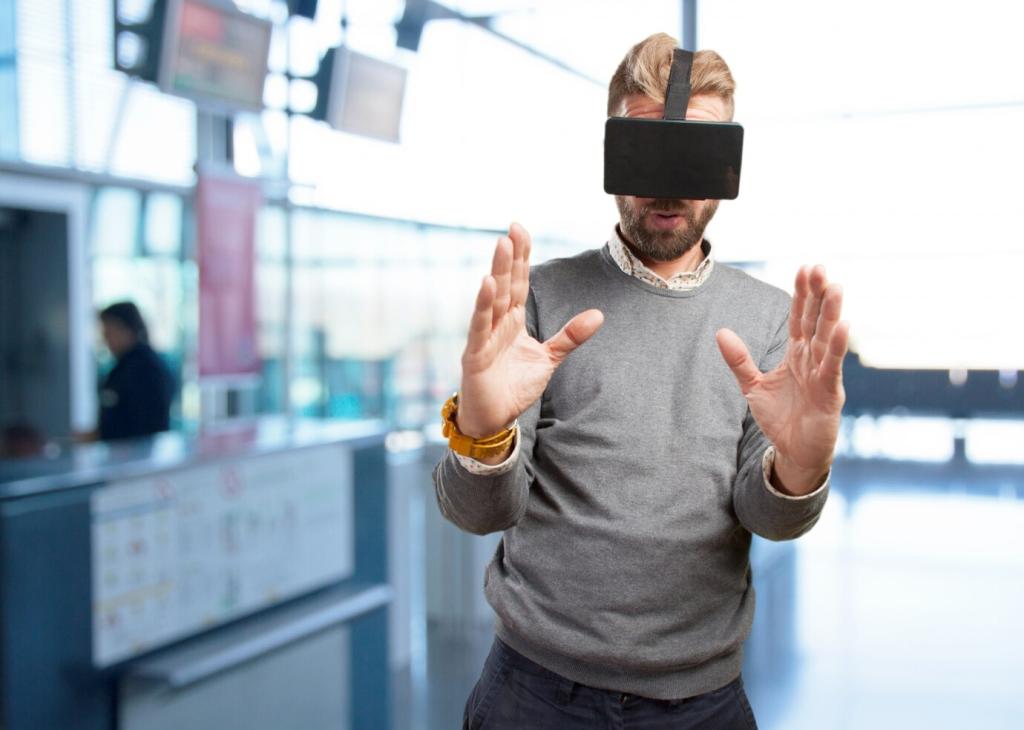
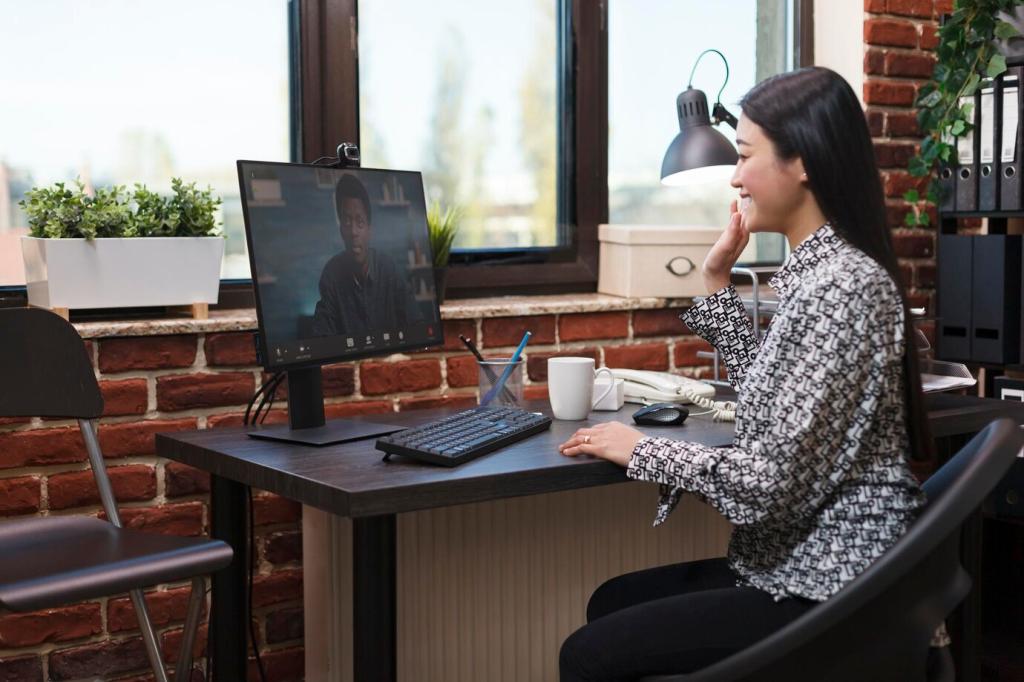
Interaction Patterns that Disappear
Design gestures that match expectations: pinch to pick up delicate objects, full grip for heavy items, wrist twist to rotate. Teach through context, not instruction panels. Ask your testers what they attempted first; their instinct is your baseline. Reply with your favorite gesture that worked without words.
Interaction Patterns that Disappear
Layer subtle cues: soft haptics when fingers graze surfaces, brighter tones at completion, and micro-shifts in object orientation for respect. A gentle click on lock-in stops over-grabbing. Comment with one haptic pattern that instantly improved comprehension, and we’ll feature it in our next design roundup.
First-Person Perspective and Intimate Moments
Small gestures carry deep emotion in VR: a character meeting your gaze, a companion offering an object into your hands. We once paused a storm so players could hear a single apology. Tell us about a quiet VR moment that moved you, and why it lingered afterward.
Environmental Storytelling and Memory Trails
Objects carry history—scored wood, faded photos, half-written notes. Arrange clues in arcs that reward curiosity without bottlenecking progress. Our mountain refuge scattered tea leaves near a cold stove, hinting at hurried departure. Share how you plant story breadcrumbs that respect player pace and discovery styles.
Branching Without Breaking Cohesion
Offer choices that change tone, not just endings: who you help first, what tool you craft, which path you light. Maintain thematic threads so branches feel authored. Comment with your favorite lightweight branching structure that kept production sane while honoring player agency.
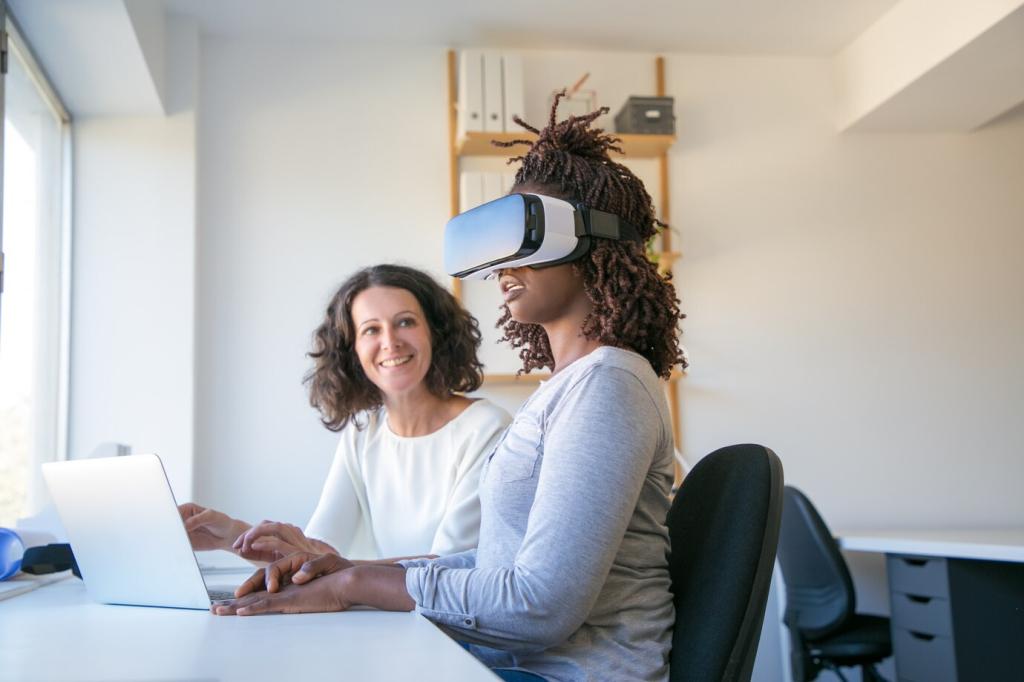
Inclusive and Accessible VR by Design
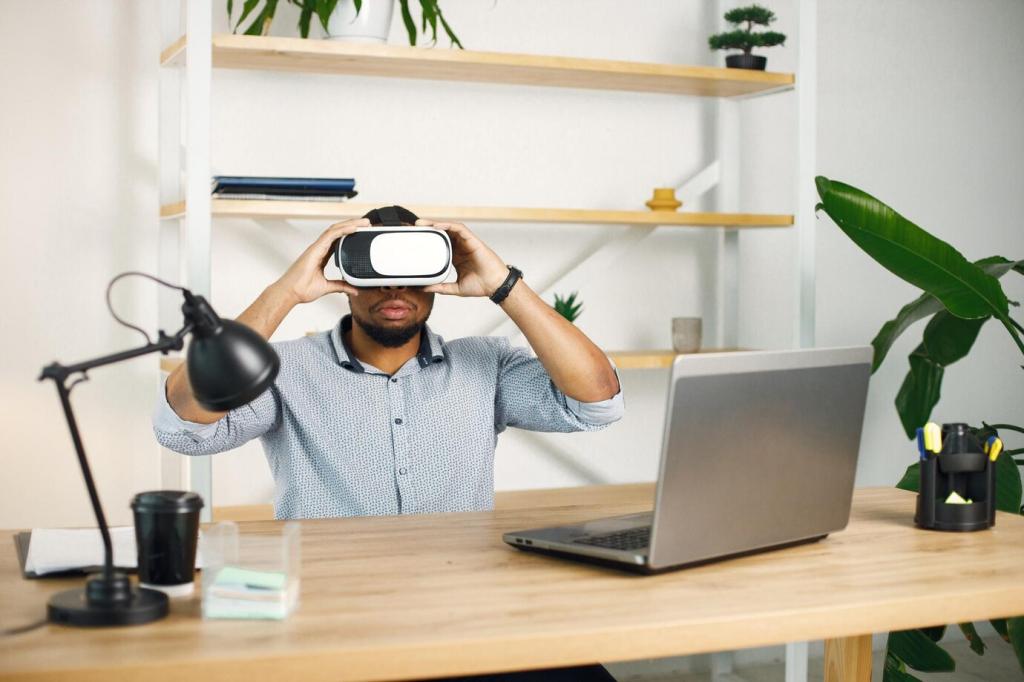
Comfort Options and Play Styles
Support seated, standing, and room-scale play. Include snap turns, adjustable height, and safety boundaries that adapt on the fly. Our seated mode boosted session length by thirty percent. Which comfort feature mattered most to you? Tell us, and we’ll prioritize it in the next update.
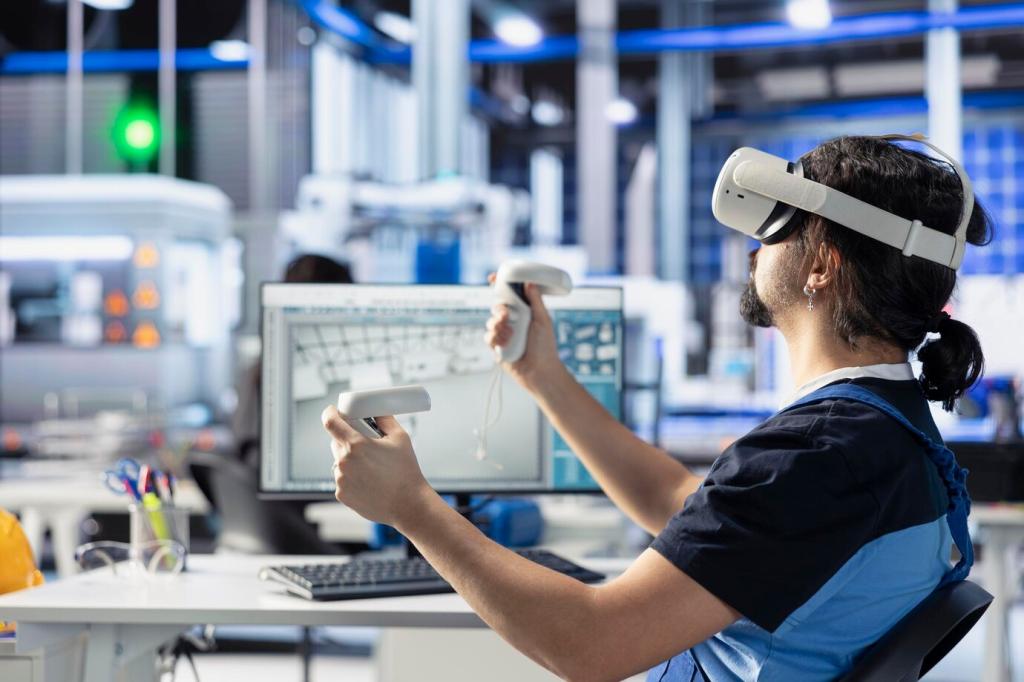
Visual Clarity, Captions, and Audio Balance
Offer high-contrast modes, scalable text, and spatial captions for critical sounds. Balance voice, ambience, and effects with a single clarity slider. Community feedback transformed our mix overnight. Share your captioning or contrast best practices, and help us refine templates others can adopt quickly.
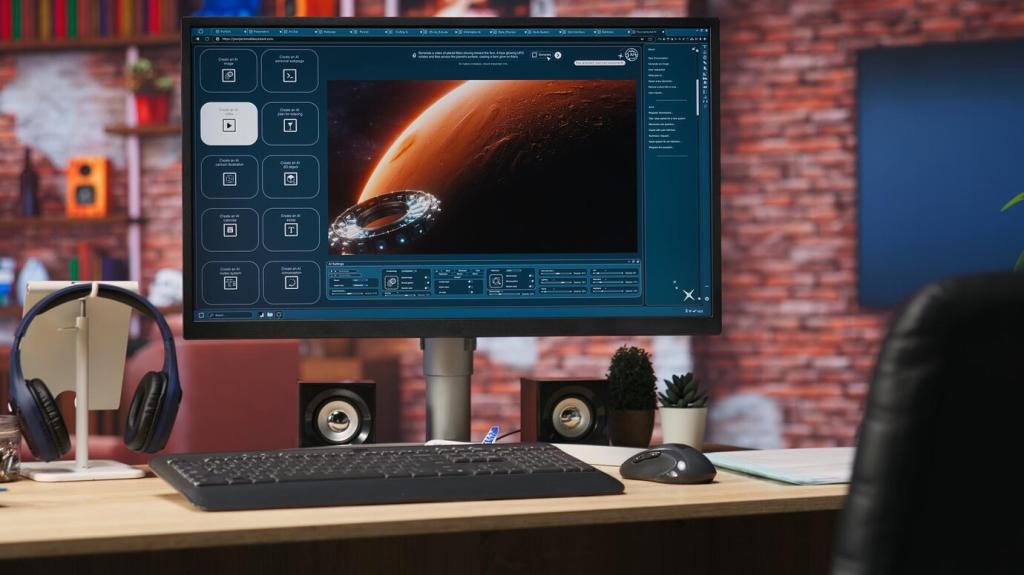
Input Flexibility and Alternative Controls
Provide left-handed defaults, remapping, controller-free hand tracking, and simplified interactions for limited mobility. We prototyped a one-hand toolkit that still felt empowering. Which input constraints have you designed around successfully? Comment with examples so we can compile a living accessibility playbook together.
Prototyping, Testing, and Iteration Loops
Block out spaces with primitives and focus on navigation, scale, and pacing before art. Our legendary waterfall was a gray cube with perfect audio that still stunned testers. Share a graybox clip or GIF, and we’ll trade feedback on feel, flow, and comfort next week.
Invite fresh eyes weekly, record first minutes, and resist explaining. After sessions, debrief with three truths: what worked, what hurt, what to cut. Ask players to narrate emotions aloud. Tell us your favorite playtest question that always surfaces hidden friction, and we’ll try it.
Track dwell time, path coverage, and motion settings—then correlate with comfort and delight, not just completion. Visualize gaze and footsteps to spot confusion. Keep data consent transparent. Share one metric that surprised you, and how it reshaped a level or mechanic for the better.
